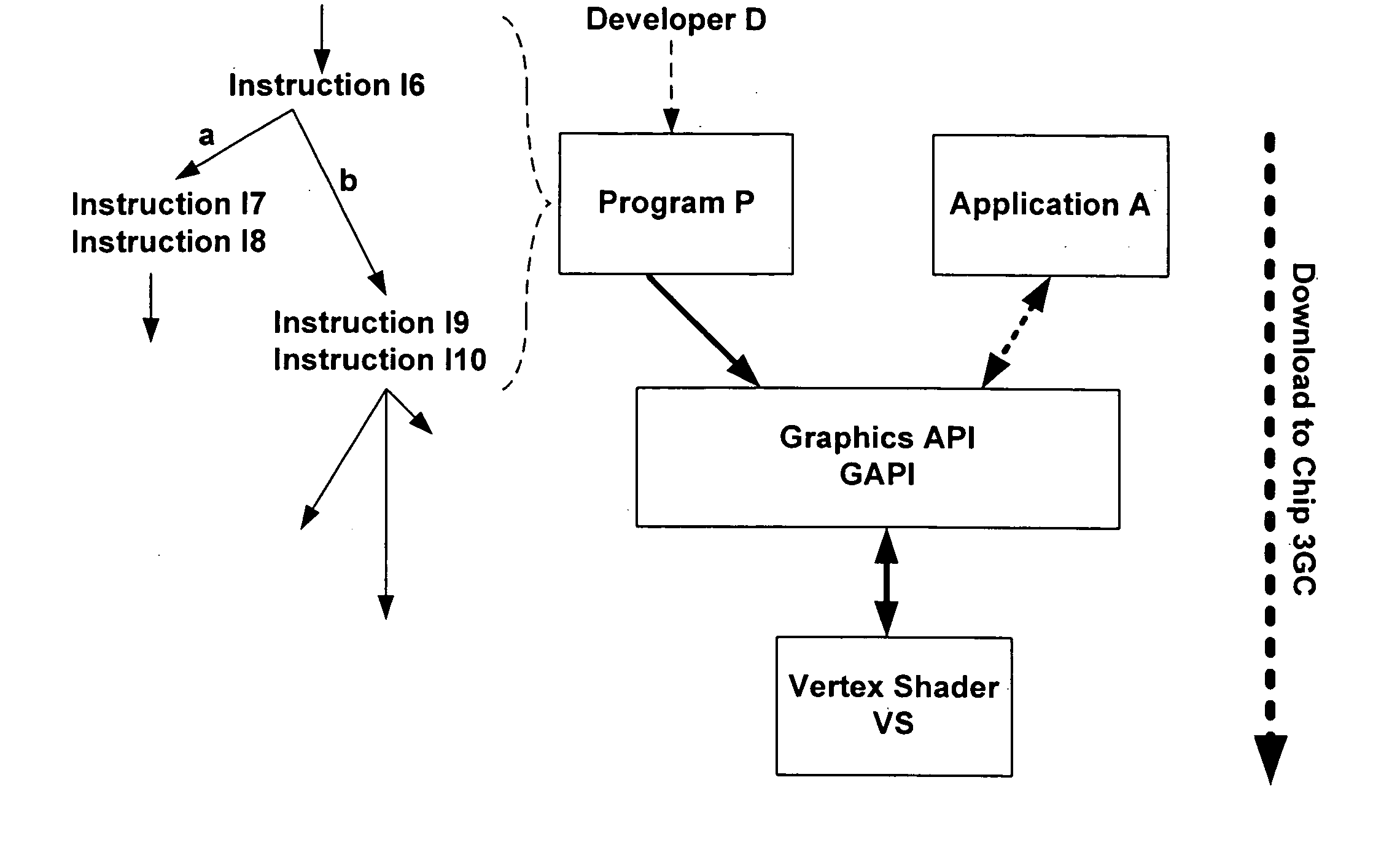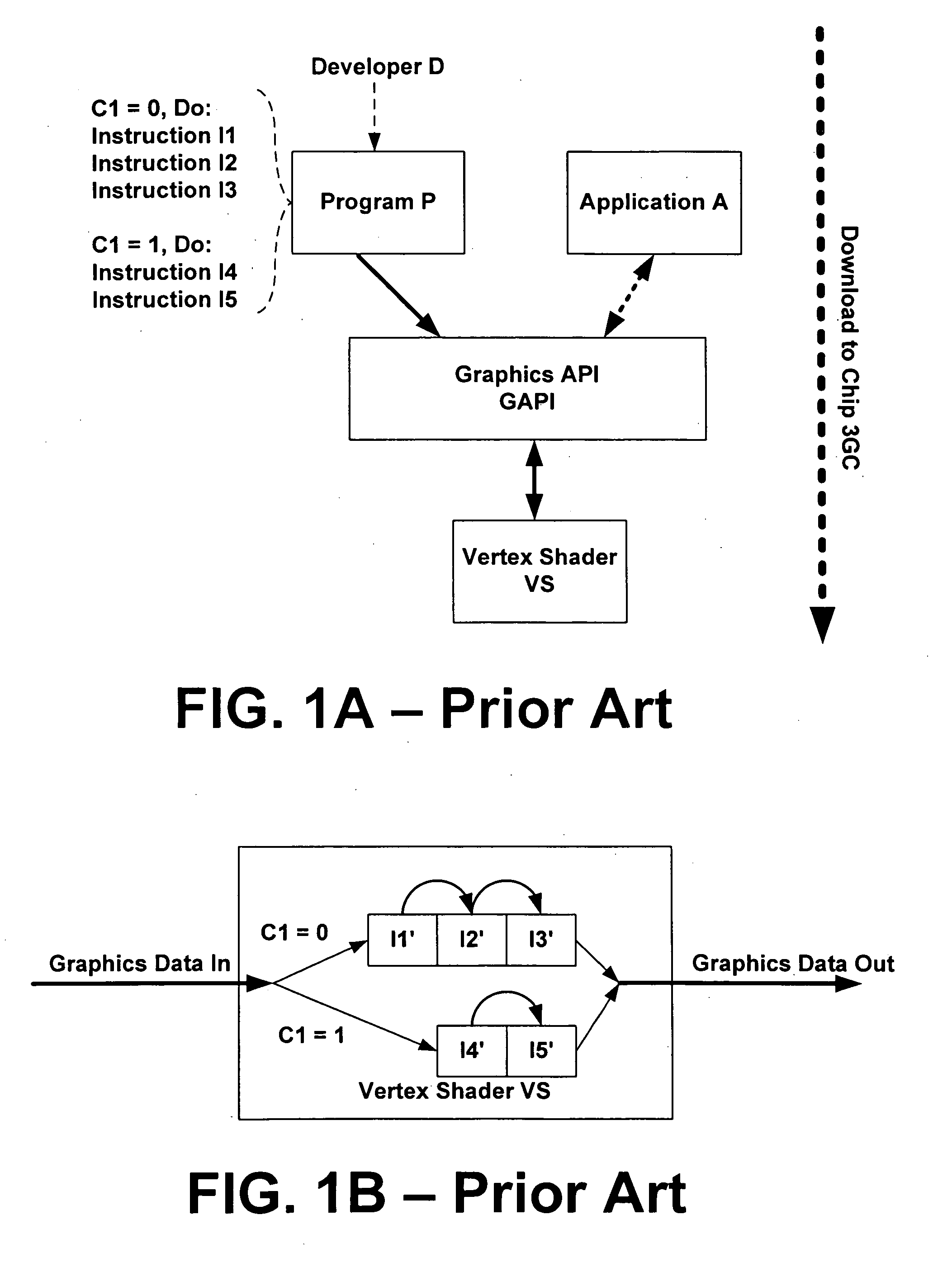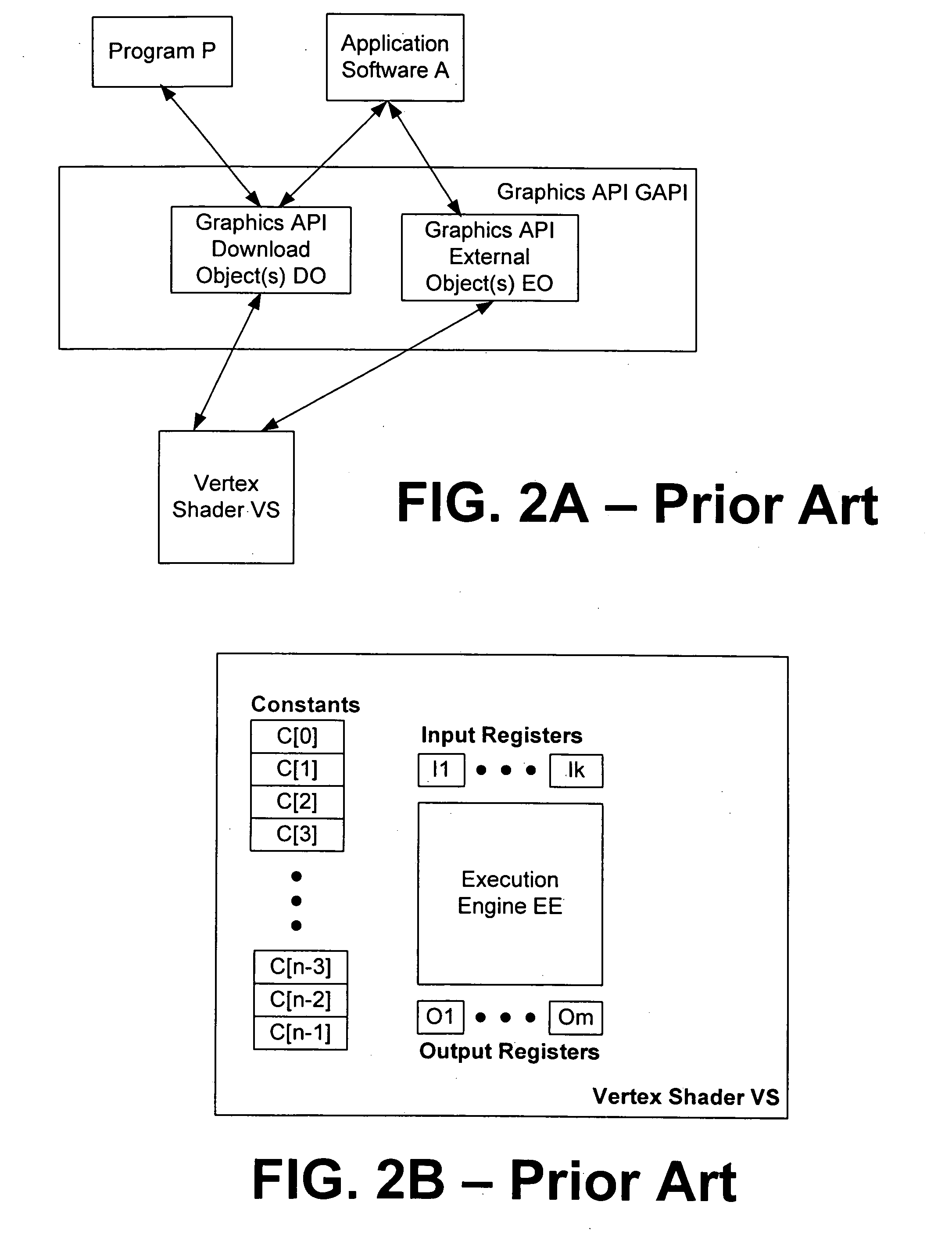Systems and methods for downloading algorithmic elements to a coprocessor and corresponding techniques
a technology of algorithmic elements and coprocessors, applied in the direction of program control, next instruction address formation, instruments, etc., can solve the problems of not being able to index the vertex shader input and output register, the current state of the program, and the inability to determine the dynamic branch of the program at runtime, etc., to achieve more on-chip register storage, improve the effect of capabilities and sophisticated effects and algorithms
- Summary
- Abstract
- Description
- Claims
- Application Information
AI Technical Summary
Benefits of technology
Problems solved by technology
Method used
Image
Examples
Embodiment Construction
Overview
[0051] As mentioned in the background, current 3D graphics chips on the market can be made more flexible and efficient, with respect to both vertex shaders and pixel shaders.
[0052] For programs downloaded to vertex shaders, the invention enables branching to occur dynamically during the execution of the programs predicating control of the processing of graphics data characteristics or variables that are set or generated at runtime. The invention further enables programs downloaded to a vertex shader to index readable / writable input and output registers of the vertex shader, which in turn enables looping or recursive behavior to be specified in programs. The invention further provides vertex buffers associated with vertex shaders with support for float data inputs or outputs, including 32 bit float precision and storage support for texture maps in the vertex buffer. The invention still further provides 96 registers for vertex shaders and a max instruction count of 512 for ...
PUM
 Login to View More
Login to View More Abstract
Description
Claims
Application Information
 Login to View More
Login to View More - R&D
- Intellectual Property
- Life Sciences
- Materials
- Tech Scout
- Unparalleled Data Quality
- Higher Quality Content
- 60% Fewer Hallucinations
Browse by: Latest US Patents, China's latest patents, Technical Efficacy Thesaurus, Application Domain, Technology Topic, Popular Technical Reports.
© 2025 PatSnap. All rights reserved.Legal|Privacy policy|Modern Slavery Act Transparency Statement|Sitemap|About US| Contact US: help@patsnap.com



